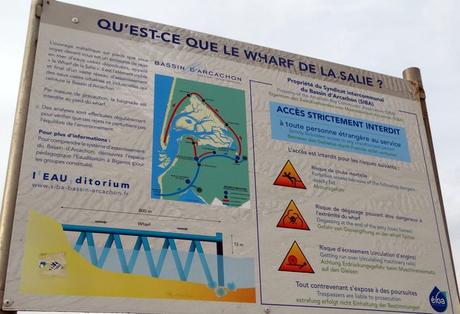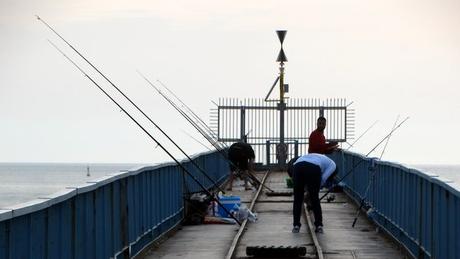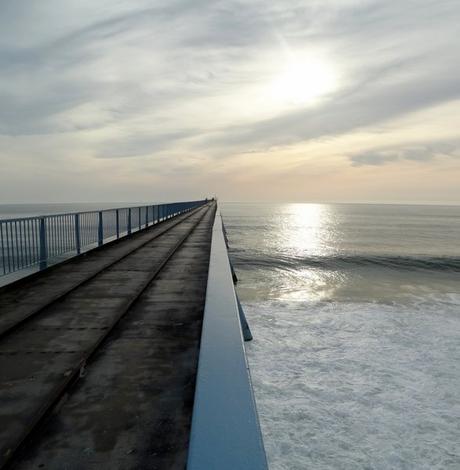 Part 3: west (La Salie and its wharf)" /> Part 3: west (La Salie and its wharf)" /> Part 3: west (La Salie and its wharf)" border="0" title="The Gironde four corners road-trip > Part 3: west (La Salie and its wharf)" />This is the third and final part of a travelogue following Bordeaux 2066’s Vincent and me on our quest to visit the extreme northern, eastern, southern and western points of the Gironde over the course of a single day. So far we have viewed memorials in Le Verdon, admired some trees in Saint-Avit-Saint-Nazaire and, a-hem, explored a former brothel in Captieux. What would the département’s westernmost point have in store?
Part 3: west (La Salie and its wharf)" /> Part 3: west (La Salie and its wharf)" /> Part 3: west (La Salie and its wharf)" border="0" title="The Gironde four corners road-trip > Part 3: west (La Salie and its wharf)" />This is the third and final part of a travelogue following Bordeaux 2066’s Vincent and me on our quest to visit the extreme northern, eastern, southern and western points of the Gironde over the course of a single day. So far we have viewed memorials in Le Verdon, admired some trees in Saint-Avit-Saint-Nazaire and, a-hem, explored a former brothel in Captieux. What would the département’s westernmost point have in store? It was now 6:30pm and we had driven some 485 kilometres by the time we parked our car in the shade of the pines at la Salie Sud beach, on the Atlantic coast more or less mid-way between Arcachon and Biscarrosse. Venturing out onto the sandy pathway over the dunes to the sea we gained a little height and enjoyed our first view of La Salie’s distinctive – and controversial – landmark: “le Wharf”.
This impressive light-blue iron structure stretches over 800 metres. Its primary purpose is to support a pipeline which spews around 60,000 cubic metres of processed human and industrial waste into the ocean every day. Sacré bleu! And yet, in many ways, the wharf, as it currently stands, was a plan B.
The original plan was to channel the sewage through a shorter wharf which would have linked up with an underwater pipe that ran along the sea bed, rejecting its contents 4,000 metres off the coast. Over several months of work in the early 1970s, the Dutch company commissioned to deliver the project struggled to cope with harsh oceanic and climactic conditions, and the pipe they were laying was irretrievably lost after a storm.
 Part 3: west (La Salie and its wharf)" /> Part 3: west (La Salie and its wharf)" /> Part 3: west (La Salie and its wharf)" border="0" title="The Gironde four corners road-trip > Part 3: west (La Salie and its wharf)" />
Part 3: west (La Salie and its wharf)" /> Part 3: west (La Salie and its wharf)" /> Part 3: west (La Salie and its wharf)" border="0" title="The Gironde four corners road-trip > Part 3: west (La Salie and its wharf)" />
The wharf, stretching out into the Atlantic waters.
The Dutch company was relieved of its duties and folded as a result. For some time, the sewage (which had, since 1971, been piped through to La Salie from the circular network of pipes that looped around the whole of the Bassin d’Arcachon) was ejected into the ocean mere metres from the beach. The sight and smell was reportedly unbearable – as well as the odour of human waste, there was (and still is) the added bonus of the waste produced by the paper manufacturing plant located in Facture, which up until then had disposed of its waste in the waters of Arcachon Bay itself. In the meantime, the local authorities had reverted to the construction of this 800-metre compromise solution, which was complete and operational in 1974.Soooo… is it safe? Well, theoretically, by the time waste reaches la Salie’s wharf, it has been processed at one of the three plants dotted around the area (in Biganos, la Teste and Cazaux). But that doesn’t stop incessant speculation about the state and properties of the produce being pumped into the ocean water. This isn’t exactly helped by the local decrees outlawing activities such as fishing, bathing and shellfish gathering in the vicinity of the wharf. And, of course, access to the wharf itself is strictly forbidden. So you can probably guess what we did next.

Information panel. And also a "don't mess with the wharf" panel.
Yes, Vincent and I headed onto the wharf and walked the full length of the metallic beast, edging ever closer to whatever the next stop might be on the other side of the Atlantic: according to my atlas, Nova Scotia and Boston appear to be the nearest options! And by no means were we alone in braving the no admission sign. There were other people strolling along the wharf enjoying the unobstructed, panoramic view over the ocean, photographers getting into position ahead of a spectacular sunset, and a handful of fisherfolk keeping watch over their lines. Some were definitely there for leisure purposes but Vincent and I had a funny feeling some were there for professional reasons. What becomes of the fish they catch?
Anyway, as the sun shone in our eyes, the wind blew on our faces and the sea-salt gathered on our skin, it was easy to forget that a few metres below our feet there was a constant flow of processed urine and poo being blasted into the sea. Then again, perhaps that was indeed best forgotten.
We reached the end of the wharf and congratulated ourselves on having achieved what we’d set out to do, road-tripping our way from north to east, south and west, enjoying a unique perspective of what it’s like to visit Extreme Gironde in a single day. All that was left to do was to head back to our starting point in Saint-Aubin-de-Médoc; we got there safe and sound with almost 570 kilometres on the clock. It had been a good day.

The pretty sight of Gironde's westernmost point, constantly spewing wee and poo into the Atlantic ocean.
